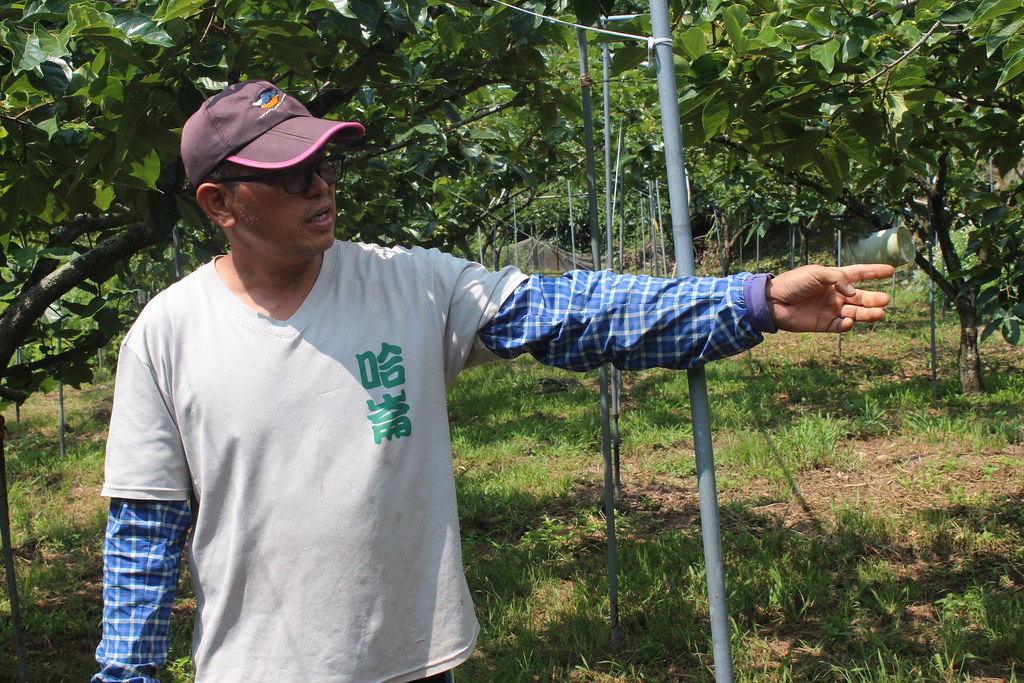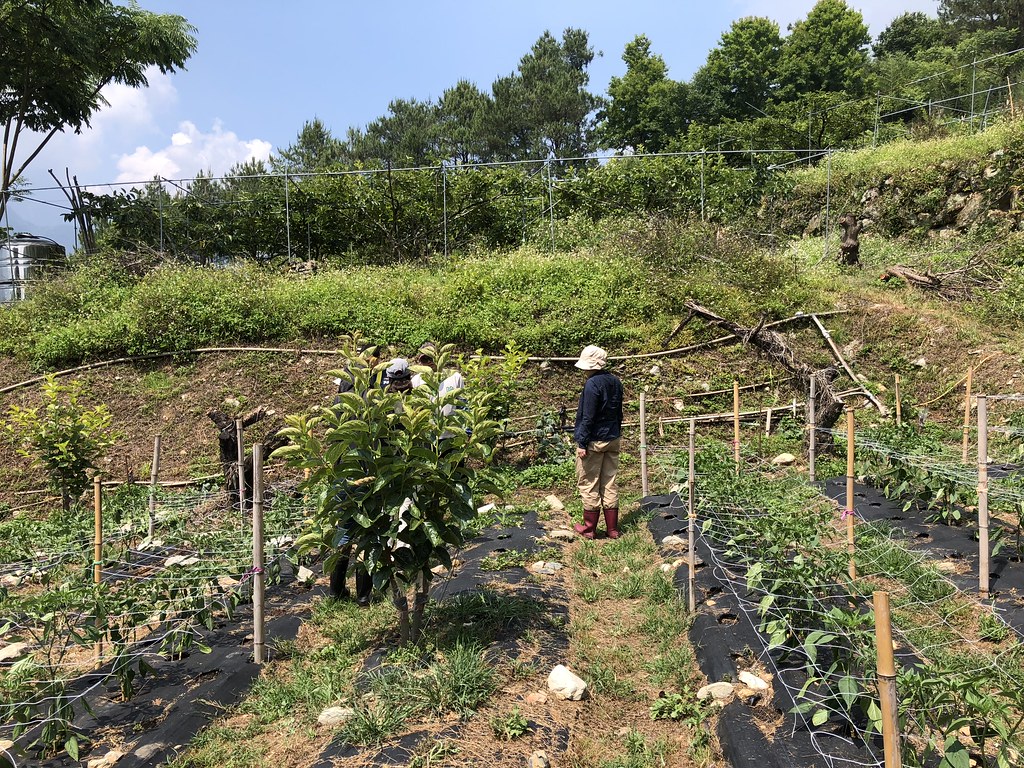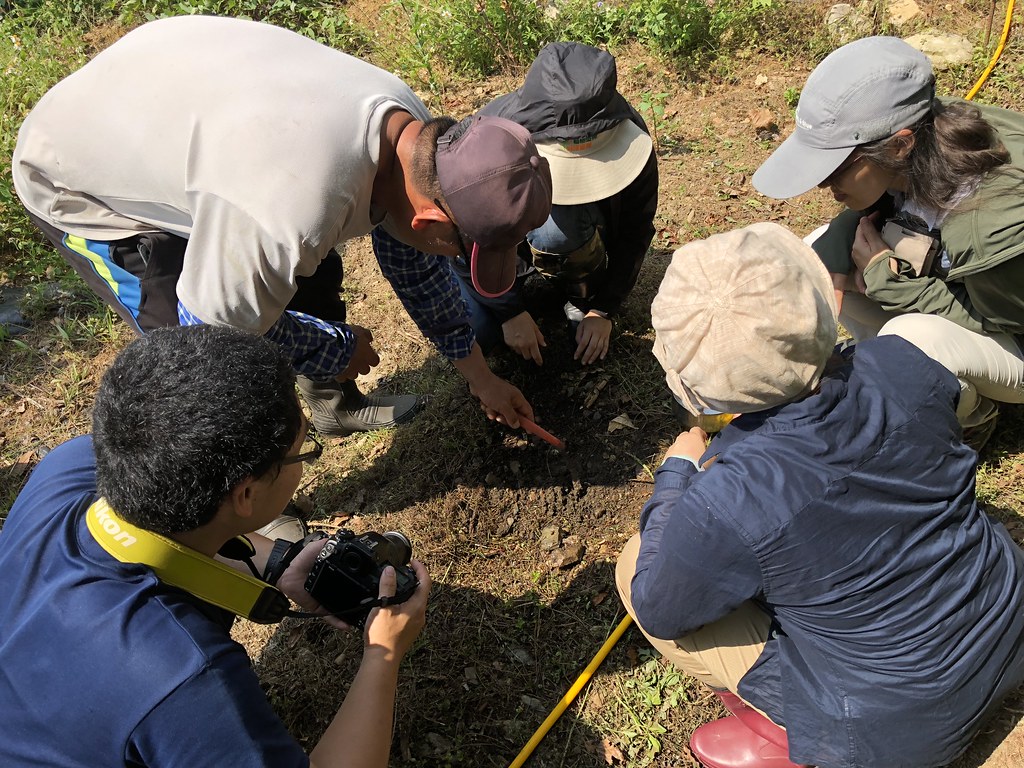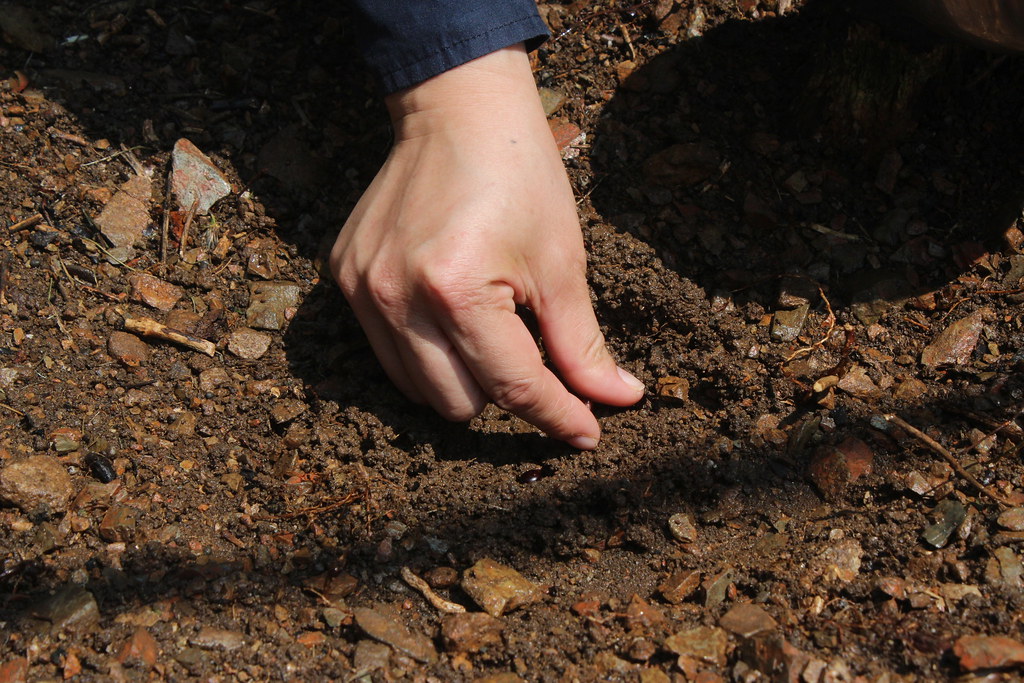Taichung, Taiwan, July 26, 2018 (TEIA)– Yabu Pakaw (雅砆鈸告), lead singer of Snhy (信念樂團), not only sings well, he is also a green thumb. On his plantation, Yabu reserves a space for reintroducing and sustaining 10 or so subsistence food crops used by the Atayal people. He hopes to preserve not only the crops themselves, but also the indigenous knowledge involving them.
“One day when climate change strikes us and those economic crops are unable to grow well, Atayal subsistence crops will secure our food sources”, says Yabu.

Yabu’s Satoyama [1] practices intercropping subsistence and economic crops
Yabu, born and raised in Guguan (谷關), Taichung City, belongs to the Atayal’s Hrung (哈崙台) tribe. He owns a plantation located on a terrace in the middle of high mountains. Under his meticulous design, this relatively small plantation is capable supplying foods to people and wildlife year- round.
Today, staff from the Dongshih Forest District Office (東勢林管處), Forestry Bureau and Society for Wildlife And Nature, SWAN (自然生態資源保育協會) have come to learn how to plant Sukay (hyacinth beans) from Yabu. Everyone digs a shallow hole, selects three similar-sized seeds from a wet cotton cloth wrap, places them in the hole, and then covers the hole with a thin layer of soil, following Yabu’s instruction.
Asian persimmon trees evenly grow on Yabu's plantation, and each persimmon tree is marked with the year it was planted. They will be Yabu’s main source of income for the next five years. Having more space between trees minimizes the risk of diseases and insect pests and cuts down the use of organic fertilizers. Yabu explains that, because he takes care of the trees by himself, this approach minimizes the amount of work he has to do.
Yabu also implements grass cultivation in his persimmon plantation. He lets the grass grow naturally and controls weeds by mowing; when the top part of the grass is trimmed, the trimmings become fertilizer. Half of the grass species are native; the other half is store-purchased seeds.
Taking a closer look at the ground, you will find that multiple crops are planted here. These crops provide all seasons harvest since they have different vegetation periods in accordance with seasons. Yabu says, “this way, the soil stays fertilized and I don’t have to resoil the slope all the time.”
The Sukay beans planted today are right next to the persimmon trees and marked with stones.
Green beans grow on top of elevated ladders in another land parcel. These are not just for bringing in revenue, but also to preserve Atayal subsistence crops. Yabu has a unique planting, fertilizing, and watering arrangement in the plantation.
In Yabu’s plantation, summer heat is rarely felt — even in June. After finishing the drudgery, the staff and Yabu sit down and enjoy the farm’s breeze. An eagle is hovering in the sky and is identified as an oriental honey-buzzard (Pernis ptilorhynchus). It is not the only wild creature that the farm attracts. The tetradium ruticarpum tree grown inside the plantation is host to different insects. September is the best time to both observe these insects and enjoy the natural orchestra they create.

Seed preservation for subsistence crops as a climate change mitigation plan
What motivates Yabu to bring back these subsistence crops and preserve their seeds? Yabu answers that he has an emotional connection to these indigenous food crops. It is a shame, he says, that people adopt modern agriculture and abandon unprofitable subsistence crops. "These indigenous food crops have been planted in Taiwan for hundreds or even thousands of years; they suit local climate conditions well.".
A few years ago, Yabu started a campaign to find the indigenous food crops that that he remembers as a child back to the farm. This year, he has brought back a slightly purple skinned traditional Atayal green bean, called qerang. When Atayal elders eat the qerang, they bite off the pod and then enjoy its stringy texture.
These traditional food crops are Yabu’s climate change mitigation plan. “One day, when climate change strikes us and economic crops are unable to grow well, our Atayal subsistence crops will remain a secure food source” says Yabu.
There are around 10 different kinds of traditional Atayal food crops in Yabu's memory: cassava, pumpkin, Lima bean, pigeon pea, squash, green bean, and taro. He found sweet potato before, but the wild boars took it away. He is always searching for other traditional crops, and has faith that he will find new ones.
When Yabu was asked if he feels lonely with his seeds preservation campaign, particularly considering he has to find the seeds all by himself, he replied in an enthusiastic tone no, because he is preserving what his ancestors pass down onto him. He asserts, “seeds preservation is a meaningful, valuable task to our lives.”
The crops for seeds preservation are unsuitable for food consumption and should be prioritized for seeding. The crops grow fast in their properly reserved space on the plantation, as though the land is remembering them. To attract more tribal members to join his campaign, Yabu shares these seeds to anyone who asks.

Traditional living styles, such as foods, hunting, and barter work, are fading away
These seeds are closely tied with the aboriginal people and culture that plant them. Yabu notes that most of the crops are still being prepared and cooked in the traditional way, but certain cuisines are fading away — for example, cavasa bread and mashed Sukay. Yabu recalls that “My yaya (mother in Atayal) told me how to make cassava bread and mashed Sukay, but people nowadays just no longer make these cuisines in traditional way.”
Yabu details the complicated preparation work of making cassava bread from scratch. After gathering the cassava, it has to be dried out completely and then powdered by mortar with pestle. The powder is then mixed with water to make dough, which is then baked on top of a piece of slate. The purpose of making cassava into bread is to make the meal portable and preserved when hunting in the forest.
Later, he shows us how to cook Sukay. Tribal members traditionally gather Sukay and save it for wintertime. Members make a stew with Sukay and game meats, which is the main nutrition source for the elders. Another way to prepare Sukay is to mash it. Dry out the beans, cook the dried beans thoroughly, mash the beans by a mortar with pestle, and then divide the mashed Sukay into portions. The mushy texture is similar to Minnan people’s “tau sar” (豆沙,mashed bean paste). Yabu additionally notes that the mashed Sukay is suitable for people to bring to construction sites, such as reclaiming lands or building sheds, to be shared as a meal. Because it is easy to carry and facilitates the type of barter work that is common for the Atayal people (instead of using money, the people often barter for food and services). Nevertheless, hunting and barter work are fading away — and these cuisines that suit the living styles are being forgotten.
“Millet was planted in arid land parcels and used as food and winemaking sources. When the Japanese came here, millet and upland rice fields were gradually replaced by rice paddies for their high food production” says Yabu.
Though millet was not planted in Hrung for a considerable amount of time, Yabu never forgets the meaning of millet plantation to the Austronesian peoples. Local Squliq Atayal people use Taiwanese chinkapin (Castanopsis formosana) as a millet cultivation barometer. When the Taiwan chinkapin blossoms, the rain is on its way and it is time to sow the millet. Taiwan chinkapin is a important tree species to the Atayal people. In the past, the elders relied on the Taiwan chinkapin heavily when there was no weather service.

Tribal indigenous knowledge is the best Satoyama strategic tactics
In 2017, the Dongshih Forest District Office initiated a Satoyama engagement in aboriginal tribes along provincial highway 8 in Guguan. Its goals are to promote a better understandings of these aboriginal tribes and communities and to put Satoyama into practice making Guguan an harmonic human-nature environment. With helps from the SWAN, the office has collected data and organizing information to document traditional Atayal subsistence crops and cultivation. A pilot study on tribal everyday life, productions, and ecosystem landscapes was materialized.
Because of this engagement, Yabu and several other tribe members started collecting and organizing the indigenous knowledge of their own tribe.
Yabu stands out not only as a talented singer, but as someone working tirelessly to preserve Atayal indigenous knowledge. With his firm believe in his land and its connection to Atayal, he devotes himself in preserving Arayal subsistence crops.


